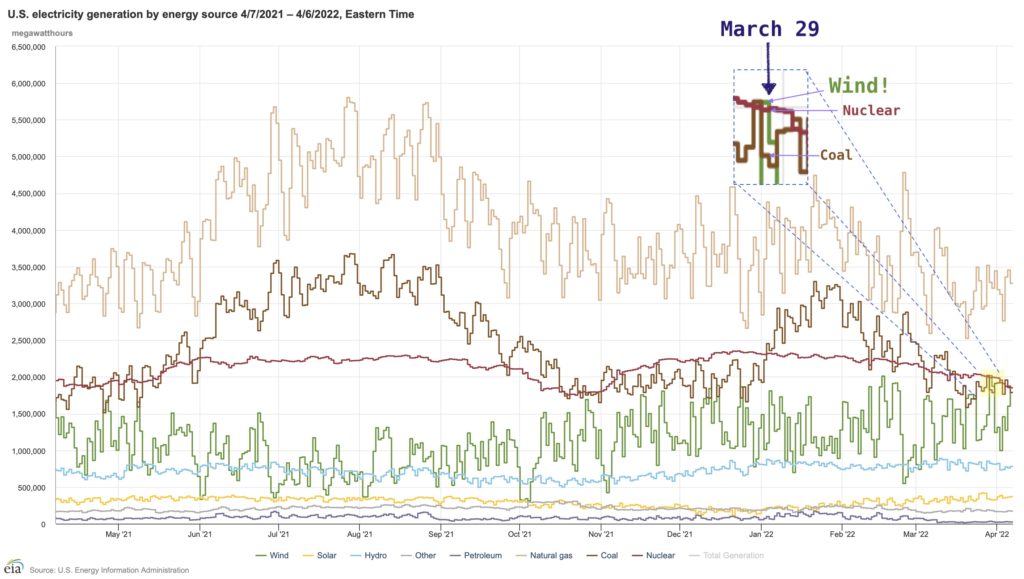South Dakota’s ag-industrial complex and its captured political operatives and apologists like to tell us that the stench of their livestock waste is the smell of money.
So how about our industrial leaders tell us that the howl of that wintry wind befouling this fine April day is the sound of money—renewable energy money! Ben Storrow of E&E News noticed that, on March 29, wind turbines generated more electricity in the United States than any other source besides natural gas. That was the first time that wind turbines out-produced both coal-fired plants and nuclear plants on the same day.

Wind produced 68 times more electricity in the U.S. last year than it did in the year 2000, and 42% of new electricity generation capacity built in 2020 came from wind turbines. At South Dakota’s retail price of 10.06 cents per kilowatthour, the 380 billion kWh U.S. wind turbines produced last year would sell for $38 billion.
Ah, the sound of money….
Hog farmers would disagree. They like the smell. Sioux City forever.
Yeah no.
Utilities are not your friends. Subsidize aerodynamics and someone will build a garage that flies. Horizontal axis wind turbines are dinosaurs with shelf lives.
Subsidizing, manufacturing, transporting, erecting, maintaining, decertifying, disassembling and disposing of any wind farm is corporate socialism on meth.
Wind and solar are the future. Nuclear can’t compete without massive government subsidies and other market interventions. Unfortunately that continues under both Republican and Democratic administrations, because they like socialism for the well-entrenched lobbies who pay to play. Coal couldn’t compete if it had to account for the cost of its waste products, which, of course, is something that well-entrench lobbies don’t want to do. Nuclear and coal tend to need to shut down for long periods for maintenance/refueling. They do this during the fall and spring when the need for power is less. That’s when wind tends to approach and now surpass nuclear and coal power generation. So that’s what you are seeing now.
Now, if we could just capture the flatulence coming from politicians, we could
pass on natural gas and use windmills for standby when they go on their overseas junkets
or as most people would call them, vacations.
Nationalize all utility operations for the good of the public. Nationalize healthcare as well. Honestly, how can these two be of service to the people when they both strive to steal from them. The PUC is a racket.
Tony Seba, ReThnkX, labels this period of technological transformation as “instability”; swirling instability; as obsolete and stranded industries struggle to survive. Hint they won’t survive. They can only prolong their demise, prolonging it to no good end.
In reality this period is volatility – economic volatility, social volatility — violence. It will likely be as violent as were the Luddite’s strikes as they smashed mills in England. US utilities are fighting tooth, nail, and monopolistic profit after monopolistic profit to minimize solar, solar credits, net-metering, wind energy, and battery storage. US car dealers are fighting tooth and nail against the Tesla-direct purchase model and against electric vehicles. “Services” are the leading revenue source for auto dealers. Electric vehicles, absent a thousand parts, are far less expensive to maintain than are gas vehicles.
Change is hard. Holding ones breath and stomping ones feet may feel good . . . and may provide ones kids and grandkids with a good laugh.
Pretty obvious why Manchin always votes for coal, overwhelming conflict of interest when he votes for his own coal business.
https://www.rawstory.com/west-virginians-lead-blockade-of-coal-plant-that-s-made-manchin-rich/